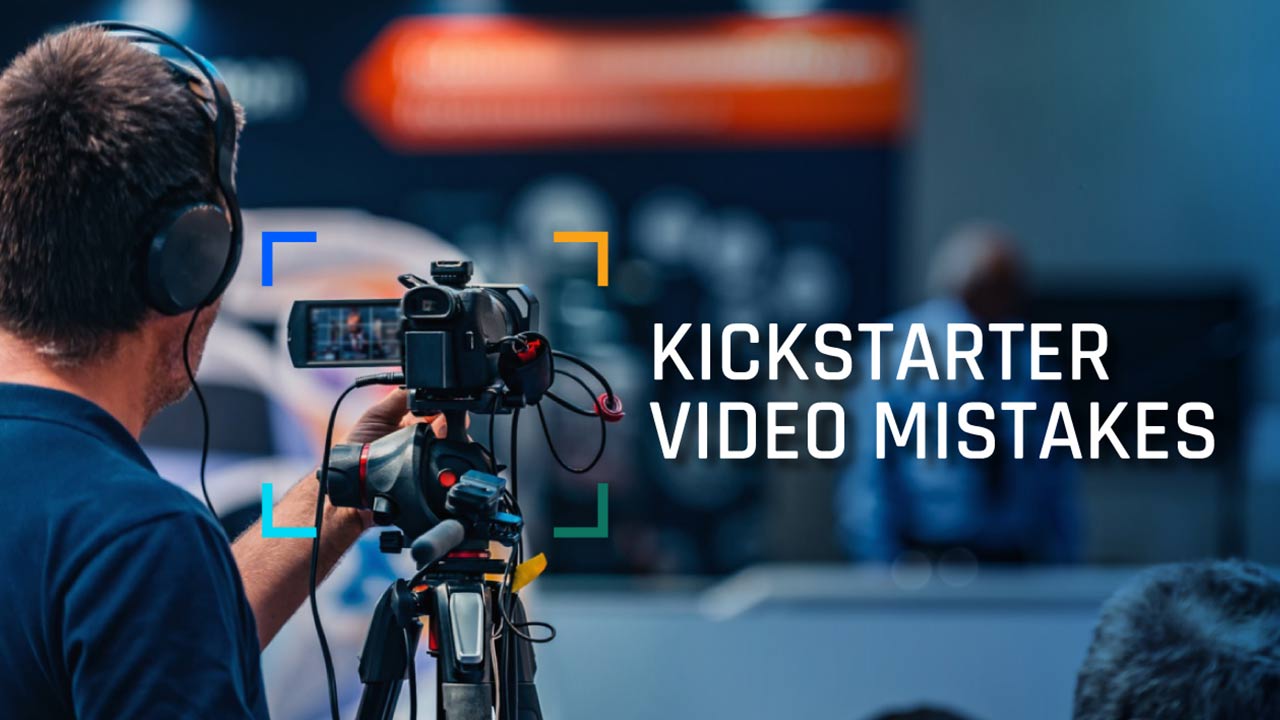Kickstarter is a platform for funding creative projects, enabling creators to produce Kickstarter video production of all types and engage with a wide audience. The projects hosted on the platform vary greatly in their nature and scope, and backers can pledge their support in a multitude of forms. Whether you’re a filmmaker, artist, musician, or entrepreneur, Kickstarter provides an opportunity to connect with a community of supporters and bring your ideas to life.
A well-crafted Kickstarter video is one of the key components of a successful campaign, as it helps to communicate the value and unique features of your product to potential backers. Crowdfunding has become a popular way for entrepreneurs and creators to fund their projects, and Kickstarter is one of the leading platforms in this space. However, creating an effective Kickstarter video is not an easy task, and many campaigns fail on Kickstarter. In this article, we will explore the top mistakes to avoid in Kickstarter video production, and provide you with tips and strategies to ensure that your campaign reaches its funding goal.
Low-Quality Visuals
In a world where attention spans are short and competition is fierce, visual storytelling has emerged as the most effective way to capture people’s interest and drive demand for your product or service. While well-crafted copy, value propositions, and customer testimonials all have their place, it’s the power of images and videos that ultimately seals the deal.
To create a visual campaign that resonates with your audience in your Kickstarter video production, it’s important to start with high-quality product photography as well as videography. While your trusty iPhone and Instagram-savvy friend may have served you well in the past, they won’t cut it for a professional campaign. Instead, invest in a skilled photographer who can work with you to bring your vision to life. Discuss the angles, props, and backgrounds that will best showcase your product, and consider including people in the photos to add a human touch. Collaborating with a professional will help ensure that your photos and videos are of the highest quality and convey your brand’s message effectively.

Not Innovative Enough
People on crowdfunding platforms pay for the opportunity to get the product they need in the future. If such a product already exists, they do not need to invest and wait months or years until your project completion. So, innovation is a crucial element that drives the success of Kickstarter video production. Suggest something that your competitors don’t have before you open the fundraising. Don’t forget to tell them why your project is unique –– it will help increase funding.
Using Kickstarter As An E-Commerce
One of the most widespread misconceptions about Kickstarter is that they are a platform for selling new products. However, these platforms are fundamentally different from e-commerce platforms as they prioritize community building. As individuals tend to invest in something that does not exist yet.
So, instead of treating these platforms like traditional e-commerce marketplaces, you need to cultivate engagement, inclusiveness, and a sense of community around your project. Before launching your product on a platform like Kickstarter, create a solid pre-launch phase. It helps you gather a group of interested individuals who are enthusiastic about your project. Having a crowd of invested individuals will make it easier to sell your product in the end.
Lack of Use Cases
When a potential backer watches your Kickstarter video, you want them to do more than just passively observe your product. Instead, you want them to become actively engaged in your project by visualizing themselves using your product to solve a problem. To achieve this, Kickstarter video production should include B-roll footage and real-life use cases that demonstrate how your product can address a problem, even if the buyer was unaware of the issue beforehand.
Simply showcasing your product is enough to win backers. Instead, it’s important to show real people interacting with your creation. By seeing how your product can improve their lives, backers will be more likely to invest in your project and help make it a reality. So, be sure to craft a video that effectively communicates your product’s value and helps backers see themselves as a part of your product’s success.
Slow and Steady Might Not Work
While it may seem logical to spread out press coverage to maintain consistent sales, this approach is flawed. The key to a successful campaign launch is to establish a strong and ubiquitous presence from the start. You want your target audience to feel like you’re everywhere, all at once.

By doing so, you create momentum and lead to a massive surge in interest, sales, and word-of-mouth. Within the first 48 hours of your campaign launch, activate your network of friends and followers simultaneously. Consistent follow-up is crucial to encourage them to share your campaign with their networks. To maximize the impact of your launch, it’s essential to leverage all available resources, including press coverage, email acquisition, and social sharing. This is particularly important in the early stages of your campaign when you want to build momentum quickly. Consider ways to convert early sales into features on platforms like Kickstarter’s “Most Popular” section, which can drive even more revenue and increase your visibility. Remember, a strong and consistent presence in the early stages can set the tone for the entire campaign and lead to long-term success.
Lack of Online Coverage
The support of friends and family can be vital to the success of your Kickstarter campaign. However, to truly succeed, you’ll need to reach beyond your immediate circle and attract a larger audience. The most effective way to do this is by garnering online coverage for your project, but this requires careful planning well in advance of your campaign launch.
One critical step is to create a pitch list, and instead of simply asking which publications you should target, there’s a more effective approach. Use Google Images to search for campaigns that match your product and see who has covered them. By identifying media targets and writers in advance, you can start looking for ways to establish a warm introduction to increase the likelihood of success. Social media platforms such as Facebook and LinkedIn are excellent resources for finding mutual connections who can introduce you to potential media targets. Remember, building relationships, encouraging social sharing, and establishing connections with media outlets and writers can significantly enhance the coverage of your project’s success on Kickstarter.
Wrapping Up
If you’re gearing up to launch a crowdfunding campaign on Kickstarter, create a video that captivates your audience and motivates them to invest in your project. Be sure to familiarize yourself with common mistakes that can derail your campaign and take proactive steps to avoid them. Remember, it’s easy to get bogged down in the minutiae of planning and lose sight of the big picture. By reviewing potential pitfalls and preparing solutions in advance, you’ll be better equipped to navigate any challenges that arise. So keep these tips in mind and stay focused on your ultimate goal.






